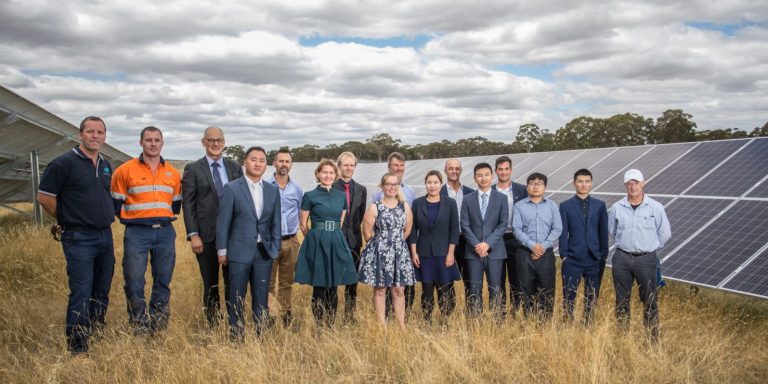Goldwind Australia has been active in developing primarily wind, but also an increasing pipeline of large scale solar projects around Australia. Coupling existing wind arrays with PV – in what is known as a hybrid array – can be particularly attractive at sites where the wind and solar resources are complementary.
By combining the large scale wind and solar reliable and grid-friendly renewable power can be fed into the grid, pointing the way towards future applications.
However, Goldwind’s plans may be grinding to a halt, with the failed National Energy Guarantee policy leaving the Australian electricity marketplace without an effective policy setting beyond 2020.
Goldwind Australia is a subsidiary of Xinjiang Goldwind Science & Technology, a provider of wind turbines and project developer.
The AFR reports that Goldwind has brought accounting and advisory company PwC to facilitate the sale of a bundle of Australian large scale solar and wind projects worth more than 1 GW. Reportedly, Goldwind is looking to sell the portfolio in full or part, and wants to close the deal by the end of November.
Goldwind has completed the 10 MW Gullen Solar Farm and the 20 MW White Rock Solar Farm is under construction – both alongside much larger existing wind generation assets located in New South Wales.
Popular content
pv magazine Australia has contacted Goldwind Australia, but has been unable to substantiate the AFR report.
The move would be a worrying sign for solar developers, with a pipeline of over 50 GW currently in various stages of development around Australia. However, it should not be a surprising one.
Not only has the federal government failed to deliver an electricity policy framework to replace the Renewable Energy Target (RET), it is now “frightening the hell” out of investors with talk of intervention into the electricity market – according to one market observer. Particularly worrying are threats of launching a Royal Commission into the electricity sector and of forced divestment, as a measure of “last resort” if retail power prices do not decline.
The importance of an electricity sector policy is based on the fact that the RET is likely to be fully subscribed by 2020 or at the latest 2022. While the National Energy Guarantee would have created very limited demand for renewables, many in the renewable sector, including the Clean Energy Council, considered it ‘better than nothing’.
Some market observers are tipping that large-scale generation certificate (LGC) prices are set to collapse by 2020, from around $75/certificate today, to less than $10.
This content is protected by copyright and may not be reused. If you want to cooperate with us and would like to reuse some of our content, please contact: editors@pv-magazine.com.



By submitting this form you agree to pv magazine using your data for the purposes of publishing your comment.
Your personal data will only be disclosed or otherwise transmitted to third parties for the purposes of spam filtering or if this is necessary for technical maintenance of the website. Any other transfer to third parties will not take place unless this is justified on the basis of applicable data protection regulations or if pv magazine is legally obliged to do so.
You may revoke this consent at any time with effect for the future, in which case your personal data will be deleted immediately. Otherwise, your data will be deleted if pv magazine has processed your request or the purpose of data storage is fulfilled.
Further information on data privacy can be found in our Data Protection Policy.